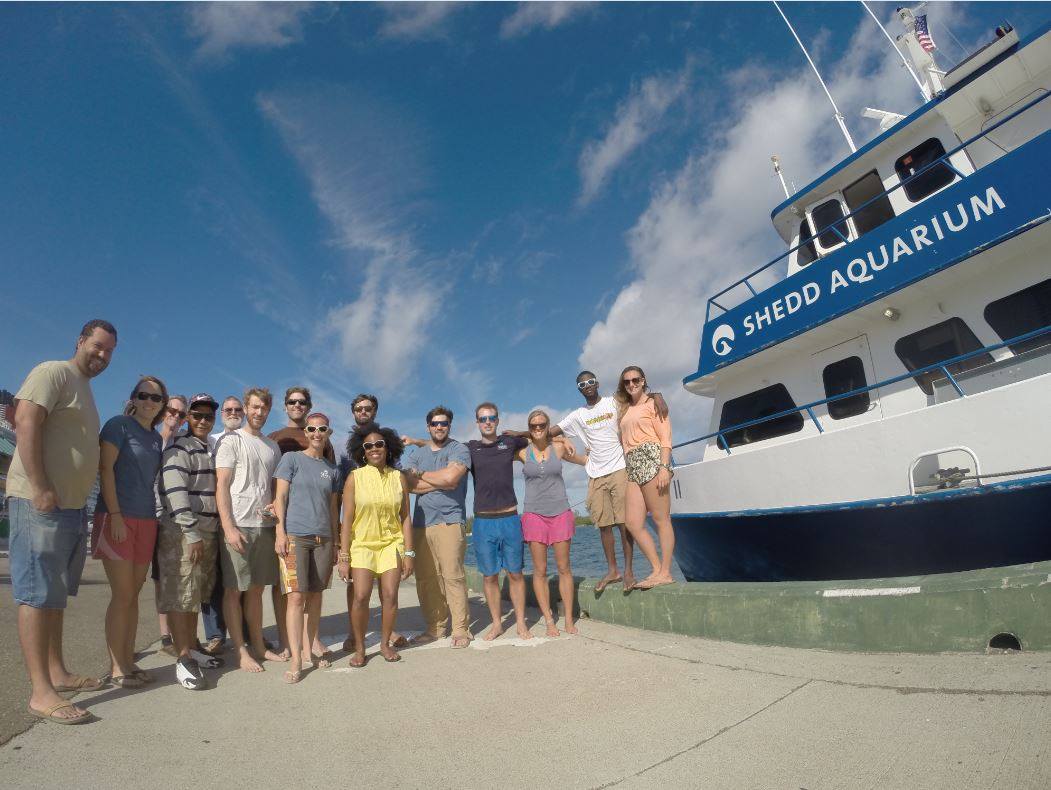Nassau grouper is an economically important species in The Bahamas. Due to heavy fishing pressure, there have been marked decreases in their population sizes, especially noticeable during their spawning season. The spawning season takes place during the winter months, from December to the end of February, and the aggregations occur during the full moon. Dr. Kristine Stump from the Shedd Aquarium has been monitoring Nassau grouper in The Bahamas to track their movements to spawning aggregations, as well as to quantify the number of Nassau grouper at these historical spawning sites.

This January, the Shedd Aquarium research vessel, The Coral Reef II, travelled to Long Island, to historical spawning sites, with a representative of The Cape Eleuthera Institute on board, to assist Dr. Stump with her research. Throughout the week-long journey, the researchers on board performed dive surveys to quantify spawning stock size at one specific site. Unfortunately, very few Nassau grouper were aggregating at the site during the times of the surveys; at most 20 were noted on one survey. Illegal fishing was occurring at the time the vessel reached the site, which could explain the decreased abundance of the grouper. Poor weather conditions prevented the researchers from performing surveys on the night of the full moon, so it is unclear if numbers increased during the spawning event.
Throughout the trip, amidst the dive surveys, Nassau grouper were implanted with transmitters. These transmitters track the movements of the Nassau grouper from the spawning sites back to their original habitat with strategically placed receivers, in efforts to understand where they come from and how far these fish travel to these spawning sites. At the spawning site, the five receivers were extracted and replaced with new receivers. The data from the receivers showed the movements of the Nassau grouper which will add to Dr. Stump’s dataset. Blood samples were also collected from these fish for Krista Sherman from Exeter University, who is using this blood to look at hormone levels and ways of determining sex of grouper non-invasively.
Although the weather failed to cooperate, four fish were implanted with transmitters which will help provide data for the upcoming spawning period, and the receivers have provided Shedd Aquarium with useful data.